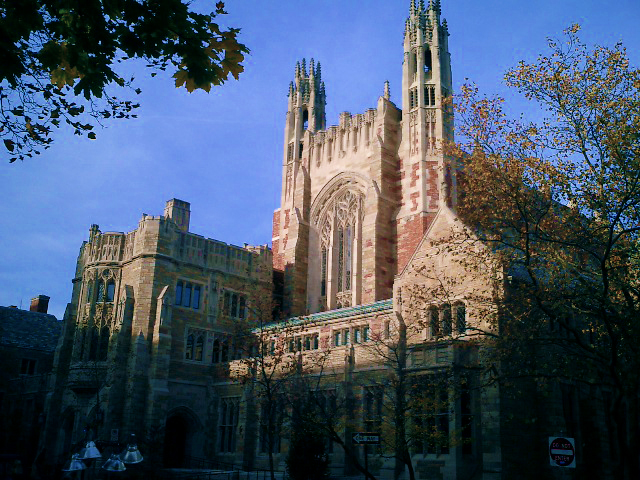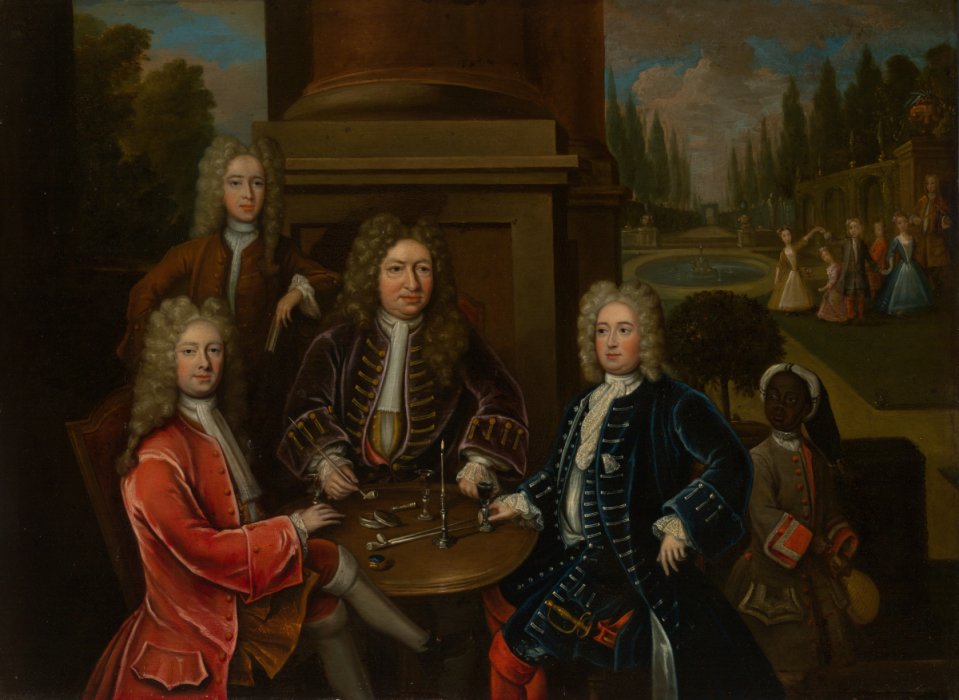
This country’s prestigious colleges and universities have a serious race problem.
At the University of Missouri, student athletes have walked off the sports field in solidarity with other students of colour protesting numerous racially intolerant incidents, including Black students enduring racial slurs on the streets and a residence hall being defaced with feces in the shape of a swastika. At UCLA, a student was photographed attending a Halloween party in Blackface, only the latest of such incidents that occur annually. Multiple lawsuits alleging North Carolina Central University, University of Illinois, and St. Mary’s College created racially discriminatory environments for faculty and students of colour. University of Oklahoma Sigma Alpha Epsilon (SAE) members were videotaped in March singing one of the frat’s traditional songs that describes a lynching, and SAE frat members reportedly subjected a Black student to racist slurs at Duke University.
At Yale University, SAE members threw a “Whites Only” party last week with students reporting on social media that a person posted at the door of the party turned away visibly minority Black and Latino students, as well as someone rejected as “gay”, and openly said the party was only admitting “White girls”. Just days later, Professor Erika Christakis (wife of the Master of Silliman College) emailed Silliman residents with a jaw-droppingly tone deaf defense of offensive Halloween costumes. In her digital screed, Christakis lamented university “censure” of racist behavior, and argued that Halloween should be a time when offensive transgressions should be celebrated. She questioned if it was really “appropriative” for a White child to engage in racial cross-dressing as Mulan (yes), and if she was engaging in fetishism when she purchased a sari — because it was “beautiful” — on her last trip to Bangladesh (also, yes).
In a head-spinning display of White privilege, Christakis wrote: “Am I fetishizing and appropriating other people’s cultural experiences? Probably. But I really like them, too.”
Quoting her husband, Nicholas Christakis, Erika Christakis wrote:
Nicholas says, if you don’t like a costume someone is wearing, look away, or tell them you are offended. Talk to each other. Free speech and the ability to tolerate offence are the hallmarks of a free and open society.
Christakis’ email propelled Yale into mainstream news headlines as students took to the streets to confront Nicholas Christakis over the email. They also staged a mass demonstration before Yale’s first Black Dean of Students, Jonathan Holloway, issuing an emotional plea for him to do something, anything, about on-campus racial hostility.
“As a black man, you know where we come from,” said Ron Tricoche, of New York. “You need to act, whether it’s with Yale or without Yale. We need you.”
Staring back at the student, Holloway said softly: “I will.”
It’s tempting for those of us on the outside of the Ivory Tower to conclude that the simmering racial debate at Yale is all about a frat party and an insensitive faculty email. It’s not. The protests at Yale, University of Missouri, and other schools are pulling back the veil that has obscured for far too long how our institutions of higher education are openly hostile to today’s students of colour.
Most of our nation’s most prestigious schools can trace their roots to a time of unabashed exclusion, when only White, male, upper-income students were permitted entry. Time has seen an unbearably slow march towards racial and gender integration. Princeton University did not graduate its first Black undergraduate student until 1947, more than two centuries after the school’s founding. Yale did not enroll its first female students until 1969.
The protests making headlines at Yale University right now are about the continuing project of racial integration in higher education. More specifically, they highlight a lasting problem for colleges and universities: that racial tolerance requires more than the mere presence of a non-White student. After centuries of inaccess, our most prestigious schools have now opened their doors to students of colour, but they have extended those invitations without having entertained the far more difficult conversation about how to make those students feel truly welcome at institutions built upon a foundation of racism.
Today, students of colour live on campuses, and attend classes, surrounded by the scars of our schools’ more intolerant past, which now only serve to remind students that we do not truly belong. I remember being struck at Cornell by the campus’ historic Willard Straight Hall Student Union building – the center of non-academic student life – which was originally built with a segregated entrance for female students. The Union also contains a bank in the foyer that was installed following the landmark 36-hour takeover of the building by Black students in 1969 to protest an act of racial terrorism committed against a Black female co-op the night before. The bank’s presence at Willard Straight Hall is a silent condemnation of the struggle for Black liberation: it exists less than two hundred feet from another bank branch found in the campus store, and on-campus legend says that the bank was installed to discourage any future takeovers of the building by ensuring the act would be a federal crime. Cornell’s extensive gardens still bear the name Cornell Plantations, with nary a thought given to how this might impact the school’s Black students.
Most of the founders of our Ivy League schools benefited from chattel slavery, but rarely do schools challenge how preservation of that history can be painful for the school’s contemporary Black students. At Yale, a portrait of Elihu Yale that hung in Woodbridge Hall until 2007 included the school’s founder being waited on by a collared Black slave (see Snoopy for more exposition on how images of Black slavery are used to create visual power dynamics in early and contemporary art). One of Yale’s 12 residential colleges is named for John C. Calhoun, a vocal proponent of chattel slavery before the Civil War.

These structural reminders of racism (and sexism) persist (and are often vocally defended in the name of “preserving history”) while initiatives aimed towards helping students of colour combat the psychological impacts of campus intolerance are undercut. Affirmative action programs – necessary for higher education access for students of colour – face a new hearing before the Supreme Court this year, and some believe the conservative leaning of the Court’s current justices may lead to the dismantling of these diversity programs. Few campuses offer a community or cultural centre that creates a “safe space” for students of colour; those that do exist are profoundly underfunded. I wrote last week about the pending demise of Asian American Studies Programs at the University of Michigan, and how it’s time to step the fuck up in support of Asian American Studies and all other ethnic studies programs.
Our colleges and universities are supposed to be institutions of higher learning, yet for students of colour, we expect learning to take place for students adrift within an undercurrent of hostility. Stories of alarming racial intolerance and outright hate crimes filter out of the Ivory Tower on an almost weekly basis, and they have for decades; yet, as a nation, we treat these stories as isolated incidents, and turn a blind eye to the larger trend of racial intolerance that has plagued students of colour since the moment of our entry through the gates of these campuses.
Erika Christakis’ email last week reveals why: our most prestigious colleges and universities remain fortresses of White privilege where the most difficult racial conversations have failed to permeate into these schools’ upper echelons of leadership. Christakis’ email is telling with regard to the attitude schools take towards its students of colour. Christakis prioritizes the right to free speech over how that speech might be used to commit acts of overt racism towards students of colour; she urges the victims of such hatespeech to simply “ignore it”. This is, indeed, the traditional approach that colleges and universities have taken towards acts of racial intolerance on their campuses: whether a burning cross, or a noose, or a fecal swastika, or racist Halloween “play”, or structural celebrations of chattel slavery. Schools tell us to ignore these dehumanizing incidents, while they simultaneously embrace the delusion that respectful academic discourse can occur in a space where students of colour experience daily dehumanization and disrespect.
We endure campuses where the right of students to commit acts of heinous racism is valued more by school leadership than the hurt we feel because of it. We endure such a campus climate, because our schools were built upon a foundation of intolerance towards non-White students, and because we have undertaken few of the efforts needed to challenge that tradition of hatred.
Our institutions of higher education, indeed, have a race problem: they have imported the bodies of students of colour in pursuit of campus diversity, but they have not done the much more difficult and radical work of inviting in our hearts, our minds, or our souls.
Act Now! If you are a Yale student, please attend tonight’s community forum event on the campus’ racial climate, sponsored by the Asian American Cultural Center.
Updated (11/9/2015): Minor corrections.
Updated (11/10/2015): This post is now cross-posted on Thought Catalog.
